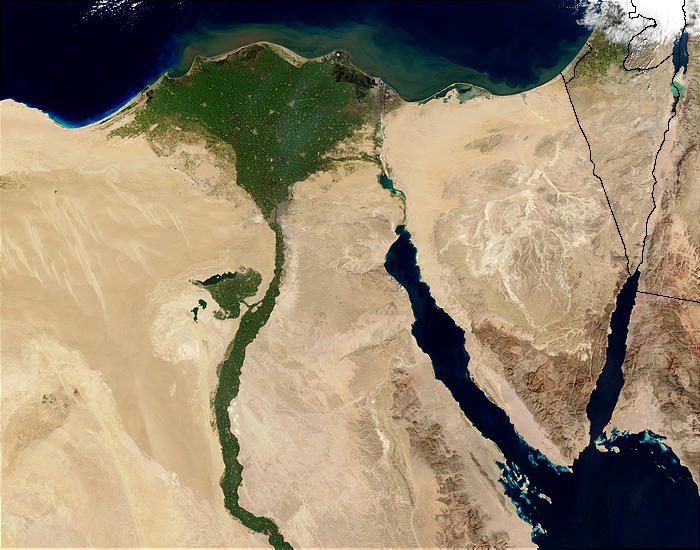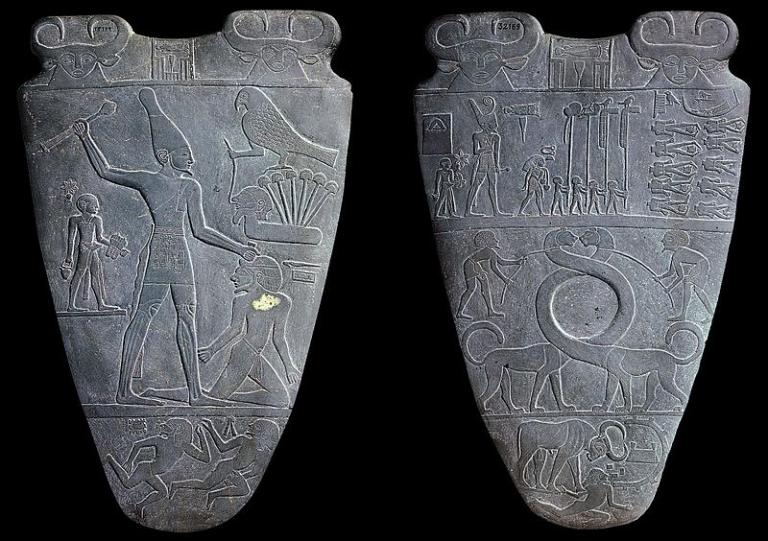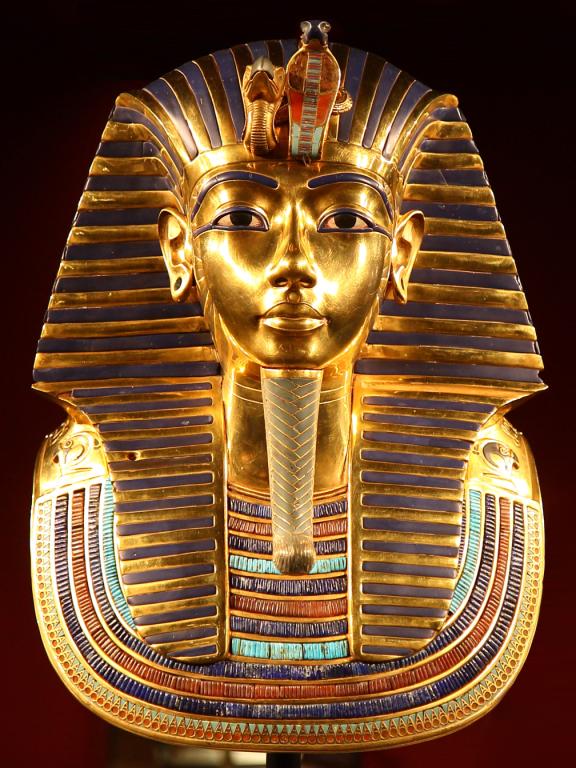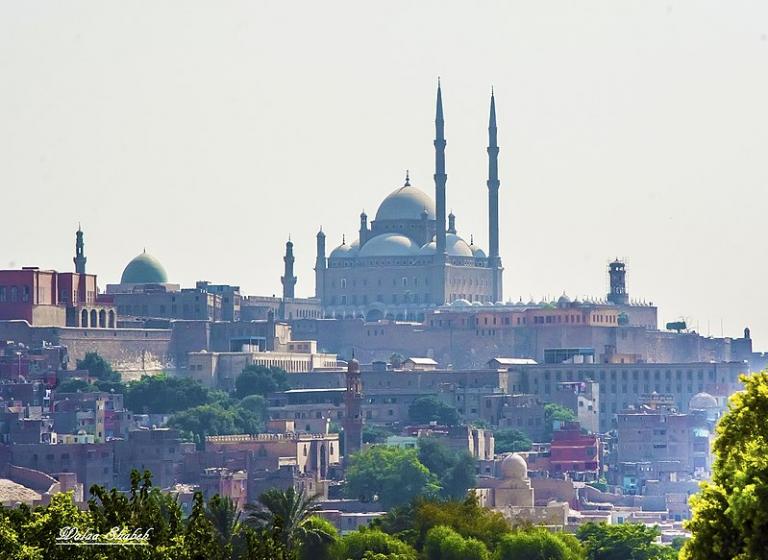
I’ll be meeting up in Cairo in just a few days with a tour group organized by the “Cruise Lady” company. I thought that I would put together a chronology of basic Egyptian history that I might share with participants in the group. Perhaps they’ll find glancing at it a helpful orientation.
I make absolutely no claim to originality here; I’ve consulted several other timelines. And I’ve included just a bit of biblical and other external history in order to put Egyptian events in context. I think that such an effort might be helpful to some.
ca. 7000 BC – Settlement of Nile Valley begins.
ca. 4500-3000 BC – Neolithic Period
ca. 3100 BC – The Egyptians develop hieroglyphic writing.
ca. 3000-2650 BC – Early Dynastic Period

(Wikimedia Commons public domain)
ca. 3000-2950 BC – Kingdoms of Upper and Lower Egypt unite under Menes (who may or may not be identical with Narmer or with Hor-Aha, two other names credited with the unification of Egypt). The distinctly dual character of Egypt will never be forgotten during the time of the pharaohs: The modern Arabic name for Egypt is Miṣr (مصر). In both biblical and modern Hebrew as well as Aramaic, though, it is called Mizraim (מִצְרַיִם / מִצְרָיִם), which features the dual suffix -āyim.
ca. 2700 BC – Papyrus is developed as a medium for writing
ca. 2650-2150 BC – Old Kingdom Period
ca. 2600 BC – Pharaoh Djoser (or Zoser) builds the first pyramid, with Imhotep as the architect, at Saqqara.
ca. 2500 BC – The Sphinx and the Great Pyramids of Giza are constructed.
ca. 2150-2040 BC – First Intermediate Period – an obscure period of political division
ca. 2040-1640 BC – Middle Kingdom – begins with reunification of Egypt under Mentuhotep II
ca. 1640-1550 BC – Second Intermediate Period – another period of political division, marked by the appearance (or the arrival, or the invasion) of the Hyksos people (Egyptian ḥqꜣ(w)-ḫꜣswt; heqa khasut, “ruler(s) of foreign lands”; ancient Greek: Ὑκσώς, Ὑξώς), a people of various origins, possibly from Western Asia (including Syria/Palestine)
ca. 1600 BC – The chariot is introduced.
1550-1070 BC – New Kingdom – Egypt’s period of greatest power and prosperity
ca. 1500 BC – The pharaohs begin to be buried in the Valley of the Kings, opposite Luxor (or Thebes)
1479 BC – Hatshepsut becomes pharaoh.
1386 BC – Amenhotep III becomes pharaoh. Ancient Egypt reaches its political peak and the Temple of Luxor begins to be constructed.
ca. 1351-1334 BC – reign of Akhenaten (Amenhotep IV), the monotheistic pharaoh

Wikimedia Commons public domain
ca. 1332-1323 BC – reign of Tutankhamun (ca. 1341-1323 BC), son of Akhenaten (originally named Tutankhaten)
1279 BC – Ramses II begins his 67-year reign as pharaoh.
1070-712 BC – Third Intermediate Period
[1047 BC – David rules from Jerusalem]
ca. 945 BC – Pharaoh Shoshenq I (biblical Shishak), who plunders Jerusalem
[740 BC – Isaiah begins to prophesy]
[721 BC – Israel, the Northern Kingdom, falls to the Assyrians]
712-332 BC – Late Period (second pharaoh of which is Piankhy [cf. Book of Mormon Paanchi)
670-669 BC – Assyrians from Mesopotamia conquer and rule Egypt.
[587 BC – Jerusalem and the Southern Kingdom of Judah fall to the Babylonians]
[537 BC – Cyrus of Persia decrees the return of the Jews to Jerusalem]
525 BC – Persian conquest of Egypt.
332 BC-642 AD – Graeco-Roman Period
332 BC – Alexander the Great, of Macedonia, conquers Egypt and founds Alexandria. A Macedonian dynasty rules until 31 BC.
31 BC – Egypt comes under Roman rule; Queen Cleopatra VII commits suicide after Octavian’s army defeats her forces. She is the last “pharaoh,” and Egypt now comes under Roman control
33 AD – Christianity comes to Egypt, and by 4th century has largely displaced Egyptian religion.
[313 AD – Constantine and Licinius issue the Edict of Milan, which grants imperial Roman tolerance to Christianity]
641-642 – Arab conquest of Egypt.
969 – Cairo founded as capital of Egypt under the Fatimids.
1250-1517 – Mamluk rule
1517 – Egypt is conquered by the Ottoman Empire and absorbed into it.
1798 – Napoleon Bonaparte’s forces invade, but are repelled by the British and the Turks in 1801.
1805 – Ottoman Albanian commander Muhammad Ali establishes dynasty that rules until 1952, although nominally part of the Ottoman Empire.

1859-69 – Suez Canal built, but it and other infrastructure projects nearly bankrupt Egypt and lead to gradual British takeover.
1882 – British troops defeat Egyptian army at the Battle of Tell el-Kebir and take control of country.
1914 – Egypt formally becomes a British protectorate.
1922 – Fuad I becomes King and Egypt gains independence, although British influence remains significant until mid-1950s.
1928 – Muslim Brotherhood founded by Hassan al-Banna, who is killed in 1949.
1948 – Egypt, Iraq, Jordan and Syria attack the new state of Israel. Egyptian army’s poor performance increases unpopularity of King Farouk.
1949 – Committee of the Free Officers’ Movement formed to overthrow corrupt monarchy.
1952 July – Coup by the Free Officers’ Movement. Farouk abdicates in favour of his infant son Ahmed Fuad II.
1953 June – Coup leader Muhammad Najib becomes president as Egypt is declared a republic.
1954 – Fellow coup leader Gamal Abdel Nasser becomes prime minister and, in 1956, president, ruling unchallenged until his death in 1970.
1954 – Evacuation Treaty signed. British forces, who began a gradual withdrawal under 1936 treaty finally leave Egypt.
1955 – Prime Minister Nasser reorients Egypt away from West towards neutrality, buys arms from Communist Czechoslovakia to re-equip army after Western powers refuse to do so on terms acceptable to Egypt.
1956 July – Having just assumed the Egyptian presidency, PNasser nationalises the Suez Canal to fund the Aswan High Dam, after Britain and US withdraw financing.
1956 October-November – Invasion of Egypt by Britain, France, and Israel over nationalization of Suez Canal fails through US opposition, greatly enhancing President Nasser’s standing at home and abroad.
1958 – President Nasser steps up campaign to promote pan-Arab unity, most visible signs of which were brief United Arab Republic unitary state including Syria (1958-61). He also supports friendly elements in Lebanese and North Yemen conflicts, but to little avail.
1961-1966 – President Nasser adopts socialist policies, including nationalisation of industry and an ambitious welfare program, combined with repression of Muslim Brotherhood and leftist opponents, in an unsuccessful attempt to boost the economy and the popularity of his government.
1967 May – Egypt expels UN buffer forces from Sinai and closes the Straits of Tiran to Israeli ships, then sign defence pact with Jordan. Israel interprets this as preparation for war.
1967 June – Israeli pre-emptive attack (“Six-Day War”) defeats Egypt, Jordan and Syria, leaving it in control of Sinai up to the Suez Canal and Egyptian-occupied Gaza (along with the Golan Heights, the West Bank, and East Jerusalem). Emergency Law largely suspends civil rights. Remains in force with brief break in early 1980s until 2012.
1970 September – Nasser dies, having never recovered his leading role among Arab states after the 1967 defeat, and is succeeded by Vice-President Anwar al-Sadat.
1971 – The Aswan High Dam is completed, with Soviet funding, and has a huge impact on irrigation, agriculture and industry in Egypt.
1972 – President Sadat expels Soviet advisers and reorients Egypt towards the West, while launching an ultimately unsuccessful attempt to open the economy to market forces and foreign investment.
1973 October – Egypt and Syria go to war with Israel to reclaim land lost in 1967. Egypt begins negotiations for the return of Sinai after the war.
1975 June – The Suez Canal is re-opened for first time since 1967 war.
1977 January – “Bread riots” in major cities against end to subsidies on basic foodstuffs under agreement with World Bank and International Monetary Fund.
1977 October – President Sadat visits Israel, beginning process that leads to 1979 peace treaty, return of occupied Sinai Peninsula, and Egypt’s suspension from Arab League until 1989. Egypt becomes major beneficiary of US financial aid.
1981 October – President Sadat assassinated by Islamist extremists month after clampdown on private press and opposition groups in wake of anti-government riots. Succeeded by Vice-President Hosni Mubarak.
1981 – President Mubarak reimposes State of Emergency, restricting political activity, freedom of expression and assembly.
1991 – Egypt joins allied coalition to expel Iraqi troops from Kuwait, and benefited from major multilateral loans and debt relief in return, allowing government to launch another attempt at liberalising economy.
2011 February – President Mubarak steps down and hands power to the army council. Goes on trial in August, charged with ordering the killing of demonstrators.
2012 June – Muslim Brotherhood candidate Mohammed Morsi narrowly wins presidential election.
2012 December – Islamist-dominated constituent assembly approves draft constitution that boosts the role of Islam and restricts freedom of speech and assembly. Public approve it in a referendum, prompting extensive protest by secular opposition leaders, Christians and women’s groups.
2013 January – More than 50 people are killed during days of violent street protests. Army chief Abdul Fattah al-Sisi warns that political strife is pushing the state to the brink of collapse.
2013 June – President Morsi appoints Islamist allies as regional leaders in 13 of Egypt’s 27 governorships, including member of a former Islamist armed group linked to a massacre of tourists in Luxor in 1997. Protests force Luxor governor out.
2013 July – Army overthrows President Morsi amid mass demonstrations calling on him to quit.
2013 August – Hundreds killed as security forces storm pro-Morsi protest camps in Cairo. Some 40 Coptic churches are destroyed in wave of attacks.
2013 December – Government declares Muslim Brotherhood a terrorist group after a bomb blast in Mansoura kills 12.
2014 January – New constitution bans parties based on religion.
2014 May – Former army chief Abdul Fattah al-Sisi wins presidential election.










